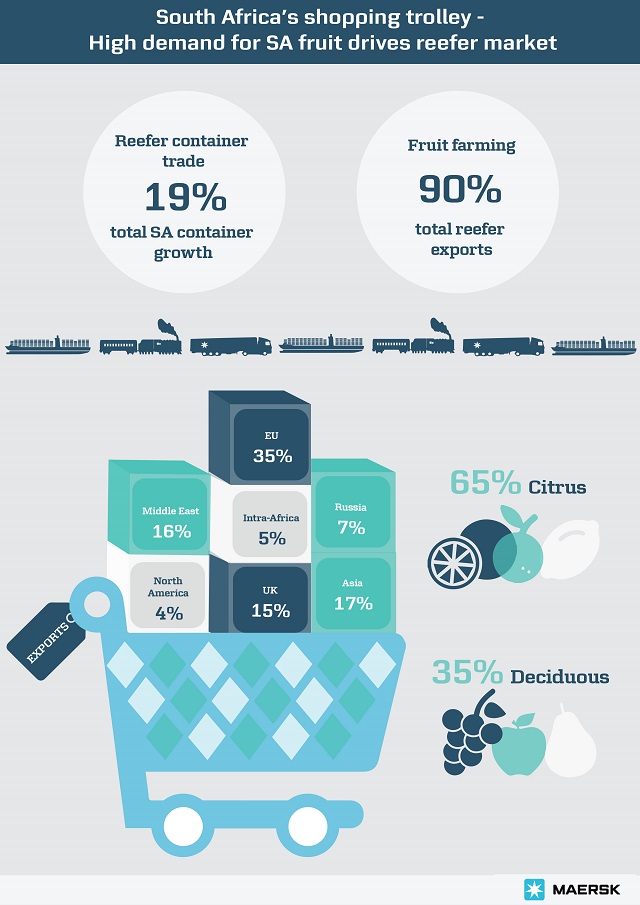Positive Outlook for South African Fruit Market
2016 saw the South African reefer market contract by about three percent – largely due to lower crop yields of citrus caused by the severe drought experienced across the region. However, refrigerated container trade still makes up about 19 percent of total South African container exports, says Matthew Conroy, Trade Manager of Maersk Line Southern Africa, and he is positive about 2017.
South Africa’s moderate climate make it the ideal location for fruit farming, which makes up over 90 percent of total reefer exports. Citrus fruits such as lemons and oranges make up the bulk of the trade, accounting for about 58 percent, while deciduous fruits such as apples, pears and grapes make up around 35 percent. Citrus crops are sourced from throughout the country, while deciduous crops – particularly grapes – are found predominantly in the Western Cape.
The European continent receives close to 60 percent of South Africa’s reefer exports, a market which has been very consistent over time. “Our biggest importer region would be the E.U., which receives around 35 percent, while the U.K. and Russia receive roughly 15 percent and seven percent respectively. Other import regions include Asia (17 percent), the Middle East (16 percent), Intra-Africa (five percent) and North America (four percent). The market has experienced no major shifts in demand with this split having been largely the same over the past five years.”
South Africa is still experiencing extremely dry conditions in certain regions, but Conroy expects moderate growth in 2017. “South African fruit is in high demand globally, so the market decline is more a reflection of the reduced crop output associated with the drought. As fruit farms are spread across the country and the drought has impacted each of these regions differently, the full impact of the drought on 2017 produce remains unknown. While this impact is very much dependent on water supply, our initial estimate is that there will be mid-single digit growth.”
In contrast to the thriving reefer export trade, Conroy says that reefer imports for South Africa are very low. “Total reefer imports that South Africa receives are in single digits. Operationally, because of the imbalance, we actually bring thousands of empty reefer containers into South Africa just to service our strong reefer export market.”

